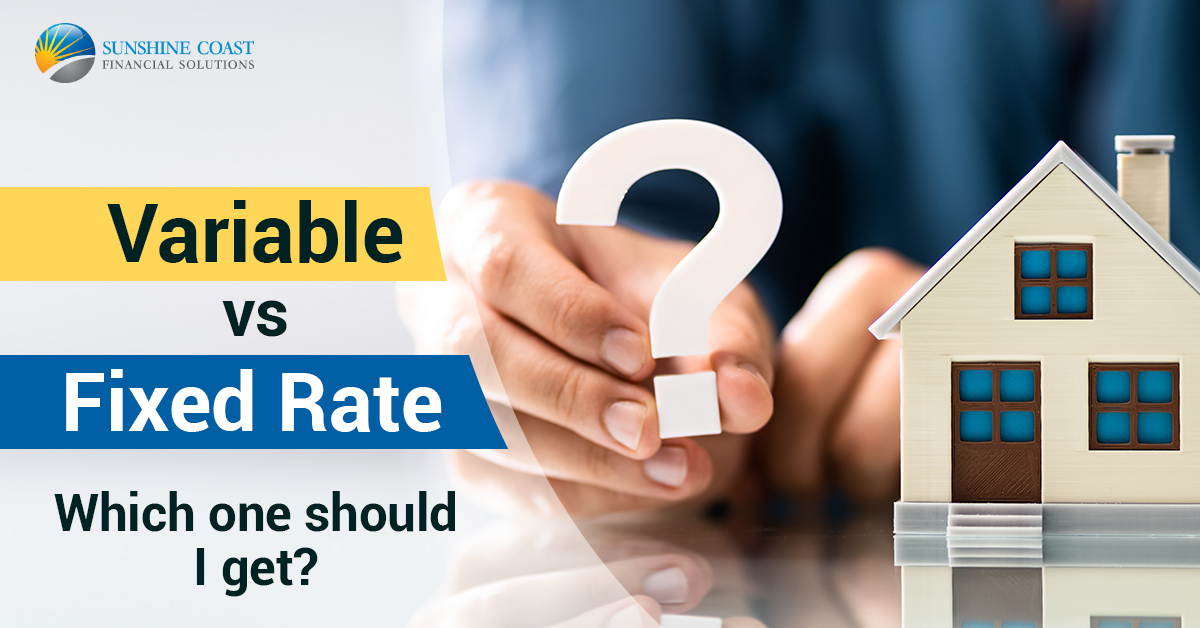In this tough market where interest rates are just constantly rising, the variable vs fixed rate debacle is plaguing not just first home buyers but also refinancing homeowners and property investors.
With the current fluctuation in cash rates and the potential for more hikes on the horizon, it’s no wonder you’re feeling overwhelmed and confused. After all, this decision could very well impact your home loan and overall financial health for years to come!
In this post, we’ll explore the differences between variable and fixed interest rates. Whether you’re looking to refinance, buy your first home or invest in property, we’ve got your back.
Let’s start with the basics.
What is a fixed rate?
A fixed rate home loan is where the interest rate is locked in for a set period, usually between 1 to 5 years. This means that your mortgage repayments will remain the same during this fixed period, regardless of any changes to the official cash rate or market conditions.
A fixed rate is a popular option for homeowners and investors who prefer stability and certainty in their budgeting. By knowing exactly how much their mortgage repayments will be for the next few years, they can better plan and manage their finances. A fixed rate can also protect borrowers from sudden rate hikes, which can be particularly beneficial in a rising interest rate environment.
Homeowners with fixed mortgage rates were greatly spared from the initial blow of the rising cash rates, and are in fact finding themselves paying up twice their old mortgage rate now! Note that fixed rate loans often have restrictions, such as limits on extra repayments or penalties for breaking the fixed term.
What is a variable interest rate?
A variable rate in is a type of home loan where the interest rate can fluctuate up or down over the life of the loan, based on changes to the official cash rate or market conditions. This means that your mortgage repayments will vary, making it harder to predict your future expenses.
A variable interest rate is a popular option for homeowners and investors who are comfortable with the uncertainty of interest rate fluctuations and want to take advantage of any potential rate decreases. If interest rates drop, your mortgage repayments will decrease, allowing you to pay off your loan faster or redirect the savings elsewhere.
Additionally, variable rate loans usually offer more flexibility, such as the ability to make extra repayments without penalty or access to an offset account, which can help reduce the interest payable.
However, it’s important to note that variable rate loans can also leave borrowers exposed to sudden rate hikes, which can increase your repayments and put a strain on your budget.
Difference between fixed and variable home loan
To better illustrate their differences, refer to the table below.
Features | Fixed rate home loan | Variable rate home loan |
Interest Rate | Locked in for a set period, unaffected by market conditions | Can fluctuate up or down over the life of the loan, based on market conditions |
Certainty | Repayments remain the same during the fixed period, making budgeting easier | Repayments can vary, making it harder to predict future expenses |
Flexibility | Limited flexibility during the fixed period, with restrictions on extra repayments or redraws and offsets | Usually more flexible, with the ability to make extra repayments without penalty or access an offset account |
Protection | Protects borrowers from sudden rate hikes during the fixed period | Leaves borrowers exposed to sudden rate hikes, which can increase repayments and strain the budget |
Suitable for | Borrowers who prefer stability and certainty in their budgeting, and those who want protection against rate hikes | Borrowers who are comfortable with uncertainty and want to take advantage of potential rate decreases, and those who value flexibility in their loan |
Break fees | Fixed rate break fees can be substantial if you break the fixed term early | Variable rate loans typically have lower break fees |
Loan term | Usually offered for terms between 1 to 5 years | Can be offered for terms ranging from 1 to 30 years |
Interest rate changes | No changes in interest rate during the fixed term | Changes in interest rate depending on market conditions |
Early repayment | Can be limited or restricted during the fixed term | Typically allows extra repayments with no penalty |
Offset account | Limited or unavailable during the fixed term | Typically available with variable rate loans |
Rate rises | Protection against rate rises during the fixed term | Risk of increased repayments in case of rate rises |
Rate falls | Limited benefit from rate falls during the fixed term | Can benefit from rate falls during the loan term |
Refinancing opportunities | Limited during the fixed term | Can refinance or switch loans with |
Table 1: Fixed rate vs Variable rate comparison
Finally, variable vs fixed rate: Which one should I get?
So, which is better fixed or variable home loan? Safe answer is it depends on your personal circumstances and priorities. But in our current climate, If your worried about meeting your liabilities it may be wise to lock in a fixed rate when you can as they reduce closer to the current variable rates.
With a risk of further cash rate increases, hurting households will be put under even more pressure to service their already exorbitant mortgage monthly repayments.
Get the right home loan deal for your situation with us
Of course individual circumstances vary, and so we at Sunshine Coast Financial Solutions will advise you on the variable vs fixed rate conversation based on your personal information. Feel free to reach out to us today when you are ready to take the next step.


